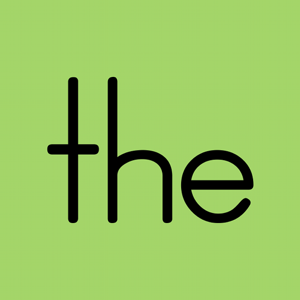In English there are three articles: ‘a’, ‘an’ (indefinite), and ‘the’ (definite). Articles are words that define a noun as specific or unspecific. This may sound simple at first, but there are a few rules you need to remember in order to make good use of them. Today we are going to show you the nine important rules for using these articles correctly. This includes when you should use them, when you shouldn’t use them and, very importantly, the pronunciation. Specifically, we will discuss when to use /ə/, /ei/, /ən/, /æn/, /ði/ and /ðə/. This is confusing to a lot of English learners so we are going to clarify this for you. This lesson will help you with your grammar and pronunciation as well. Now let’s get started!

Rule #1: the pronunciation of ‘a’ and ‘an’
You should prioritize pronunciation over grammar at the beginning, because it’s normally easy to unlearn bad grammar habits, but it’s very challenging to correct wrong pronunciation. This is something that most English teachers do not really focus on during your learning process. ‘A’ and ‘an’ may seem like simple words, but you will be surprised at how many mistakes are made with these words.
Let’s talk about ‘a’ first. In British English, the standard pronunciation of ‘a’ is /ə/. You will also hear native speakers occasionally say /ei/. So we have two options: /ə/ or /ei/. We all know that /ə/ is the standard, most common form. So when do we use /ei/? It is a strong form of the article ‘a’. We use /ei/ when we are stressing, emphasizing something. Take a look at the difference between /ə/ and /ei/ in context. You might ask for a drink by saying ‘Could I have a drink?’. In this case, ‘a’ is pronounced as /ə/. But if you are given two drinks, you might say ‘I asked for a drink’ – ‘a’ is pronounced as /ei/ instead. That means you are emphasizing you wanted one drink, not two drinks. There is also another possibility that you might not find in grammar books, but it’s important to understand. You can hear native speakers use /ei/ in place of /ə/ when they are contemplating or thinking about what they are going to say next. For instance, someone can say ‘I think I’ll have a…coffee’, in which ‘a’ is pronounced as /ei/.
So what about American English? In American English, /ei/ is more commonly used, although it depends on regions. There are no strict rules, you will hear people using /ə/ and /ei/ in their conversation as they please.
This is all the same for /ən/ and /æn/. In British English, people are most likely to say /ən/. This is a weak, unstressed form, but if you do want to emphasize the article, then you might say /æn/. You also use /æn/ when you want to elongate the article for contemplation as you do with /ei/. In American English, /æn/ is more commonly used.

Knowing how to distinguish between ways of pronouncing is important!
Rule #2: the pronunciation of ‘the’
Normally, in general we say /ðə/. However, when the article comes before a vowel sound, it is pronounced as a long /ði/. For example, you use /ðə/ in these cases: the bag, the cat, the hand, the maid; and /ði/ in these: the apple, the end, the only, the uber. It’s important to remember that you say /ði/ before a word that starts with a vowel sound, not just a vowel letter. Take a look at the word ‘university’ (/,ju:ni’və:siti/). Its first letter is a vowel but its first sound is not a vowel sound, so we say ‘the university’ with /ðə/. You also use /ði/ when you want to emphasize something. It doesn’t matter what sound the following word begins with if you want to stress it. For example, when someone wants to tell you that they met the Queen the previous day, you might say ‘What? You met the Queen?’ with ‘the’ pronounced as /ði/ in order to emphasize ‘the Queen’.

Rule #3: when to use ‘a’ and ‘an’
‘A’ is used before words that begin with a consonant sound: a hand, a brother, a mother, a sister, etc. ‘An’ is used before words that start with a vowel sound: an apple, an elephant, an excellent student, an event, etc.

Rule #4: use ‘a’ and ‘an’ with countable, singular nouns only
Countable nouns are nouns which have both a singular and a plural form: one bag, two dogs, etc. On the contrary, uncountable nouns cannot be counted: water, salt, tea, anger, etc. You cannot say ‘I have four angers’, because ‘anger’ cannot be counted. However, it is okay to say ‘I’d like three coffees’, because it means you’re implying you want three cups of coffee. We are talking about the units. While ‘a’ and ‘an’ can only be used with countable, singular nouns, ‘the’ can be used with all kinds of nouns: the anger, the whole, the European Union, the end, etc.
Rule #5: the difference between ‘a’, ‘an’ and ‘the’
‘A’, ‘an’ is used to talk about something that is unknown to your listener, and ‘the’ is used to talk about something that your listener already know. Complicated? Not at all. You can surely understand this. Have a look at this example: ‘I have a dog and a cat. The dog is golden and the cat is ginger.’ You say ‘a dog and a cat’ in the first sentence because it’s the first time you’re mentioning them to your listener; in other words, they are unknown to your listener. In the second sentence, it is ‘the dog’ and ‘the cat’ because they are already known to your listener – they know exactly which dog and which cat you’re talking about. ‘A’ and ‘an’ are called indefinite articles because they refer to something that the listener doesn’t know about.
‘The’ is called a definite article because it refers to something the listener already know about. Let’s take a look at another example: ‘I bought a new hat yesterday. The hat was red’. This is simple because only one hat is mentioned. But what if you want to talk about more than one hat, or, in general, more than one object or person? You can say ‘I bought some new hats yesterday’ or ‘I bought three new hats yesterday’ if you want to specifically mention the number of hats.
In these examples we have used ‘a’, ‘an’ or ‘some’ in the first sentence, and ‘the’ in the second sentence because the listener knows what you’re talking about. But you don’t always have to do this. Sometimes your listener will automatically understand what you’re referring to so you can just use ‘the’. For example, ‘Can I use the toilet?’. The listener definitely knows which toilet you’re talking about when you say this – maybe it’s the only toilet in the house, or the nearest one. Another example: ‘The woman with blonde hair is my mother’. You say ‘the woman’ first, then you give information to identify her so that your listener knows exactly which woman it is.

Rule #6: use ‘a’ and ‘an’ to talk about things that aren’t specific
When you want to borrow your friend’s eraser, you might ask ‘Do you have an eraser?’. This means you’re just talking about any eraser – it’s non-specific. But if you say ‘Do you have the eraser I gave you last week?’, then you’re talking about one specific eraser. So you use ‘a’ and ‘an’ when the thing you mention is non-specific, and ‘the’ when it is specific.
Rule #7: use ‘a’ and ‘an’ to talk about the category, type or profession of something or someone
Here are some examples:
‘Elaine is a feminist’.
‘I am a teacher’.
‘She works as an engineer’.
‘He’s an attractive man’.
In other languages, this is different, but in English we always use ‘a’ and ‘an’ when we talk about a category, type or profession.
Rule #8: when you talk in general, don’t use articles!
If you want to talk in general using plurals or uncountable nouns, don’t use an article. For example, ‘Leather belts are expensive’. Without an article, this means you’re talking about leather belts in general. ‘The leather belts are expensive’ – in this case you’re talking about a particular kind or brand of leather belts.
Rule #9: when to NOT use articles
It can be difficult to know exactly when to not use an article – many English learners out there also struggle with this. We are going to talk about a few important rules as well as many other exceptions.
– Firstly, we don’t use articles with proper nouns, which include first names and holidays. We don’t say ‘the Lucy’ or ‘the Easter’.
– When it comes to geography, articles are generally not used but there are quite a few exceptions. We don’t use articles for countries, states, cities, continents, single lakes and mountains. Here are a few exceptions: The Ukraine, the Congo, the US, the UK, the Philippines, the Czech Republic.
– We also don’t use articles for sports, languages and universities. Nevertheless, if the university’s name begins with the word ‘university’, then we do use ‘the’. For example, you say ‘The University of York’, ‘the University of Reading’.
– Articles are also not used when we talk about places, locations or streets. However, we can say ‘the bank’, ‘the cinema’, the hospital’, ‘the dentist’, etc.
– We don’t use articles for a noun plus a number. For example: platform 9 ¾, room 101.
– Generally, we don’t use articles for acronyms – NASA, NATO. However, if the letters are pronounced individually in the acronym, we do use an article – the UN, the EU, the US. This does not apply for university acronyms – UCLA, MIT.

Sometimes you should not use articles!
CONCLUSION
To conclude, it is very important to be able to use the articles properly, both when writing and speaking. By remembering these eight rules, you will know when to use and when not to use articles so that your English can be accurate and natural at the same time. In addition to learning the rules, you can also read books to gain a better understanding of these articles. We hope you find this lesson helpful!




